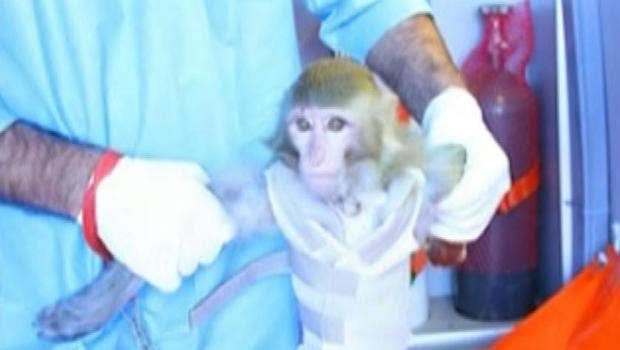
Following Iran's announcement that the county had sent a monkey into space and successfully retrieved it, space experts in the U.S. told BuzzFeed Monday that the achievement is not as impressive as it sounds. Some think it might not have happened at all.
Asked whether he thought Iran actually sent the monkey into space, Henry Hertzfeld, a George Washington University professor and former NASA policy analyst responded, "Probably not. I wouldn't believe it yet, but I'm not saying they couldn't."
"I would be surprised if they could do that, but that could be a cover for missile tests again," said Robert Farquhar, a space exploration researcher who is an executive at the firm KinetX. "I didn't think they had something that could do that, certainly not to recover the monkey again."
"To get him into orbit, I don't think they have that kind of range yet," Farquhar said. "Even if they get him up there, they'd have to get an entry capsule to get him back."
Iran said on Monday that it had sent the monkey to an altitude of 75 miles above the surface of the earth. The Kármán line, which is usually defined as where space begins, is 62 miles above the earth's surface.
Experts agree that Iran isn't yet capable of getting an animal into orbital space and back alive yet, to their knowledge. But the feat of putting an animal into suborbital space, where the risk posed by the intense heat of re-entry isn't an issue, is one that other countries surpassed in the 1940s and 1950s.
"The implication is that this is a suborbital flight, into which the Soviets and Americans were able to loft monkeys and dogs by about 1950, using World War II vintage rocket designs," said Arlin Crotts, a professor of astronomy at Columbia University and former NASA researcher. "The Nazis accomplished much the same thing, minus the monkey, in 1944."
"It's no big deal if you have a rocket that can get up to that sort of height. You've only got to keep the animal alive for like half an hour and not send them through any G forces," Crotts said. "They tried to do this before but they killed the thing."
"Basically popping them up in the air and getting them 60 miles above the earth — there are amateurs that could come not that far from doing that," Crotts said. "It's sort of like, that's really great, you're like 70 years behind the curve here, but you're trying."
The paltriness of the mission could be beside the point if it was intended as a cover for something else.
The monkey's space mission could just be a "fig leaf you put on a military program you want to disguise or you want to camouflage," said James Oberg, a retired rocket scientist and NBC News space consultant. "It's murky."
Oberg agreed that the Iranians were capable of sending a monkey into suborbital space, calling it "the kind of flight that space tourists are going to be doing and that rockets have been doing for 60 years. Universities and private research institutions are doing these kind of flights in Europe and the United States regularly."
Oberg estimated that the monkey's journey probably lasted between 12 and 15 minutes.
He stressed that Iran doesn't have the capability yet of sending a living thing into orbit.
"They don't, and a major problem in following their program is the very careless terminology even their own writers use about orbits and space," he said.
"It's possible they're lying about it. It would be kind of a bold lie to make," Oberg said.
A spokesperson for NASA didn't return a request for comment about the monkey.
Update, Feb. 1: The Times of London is reporting that the monkey's flight was, indeed, a fake.
